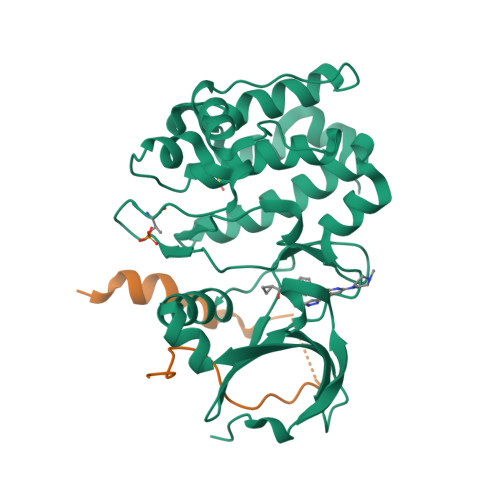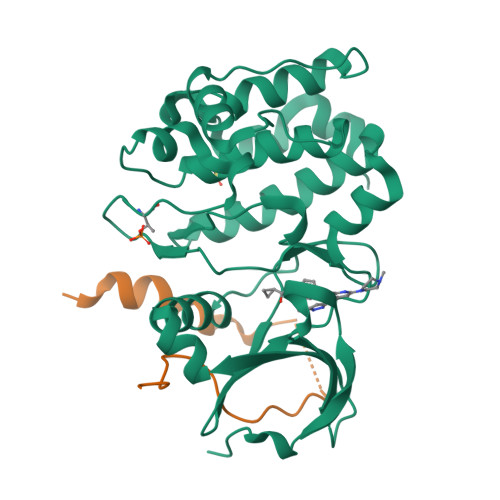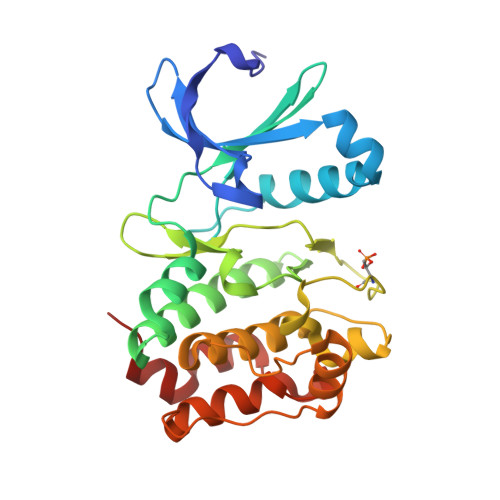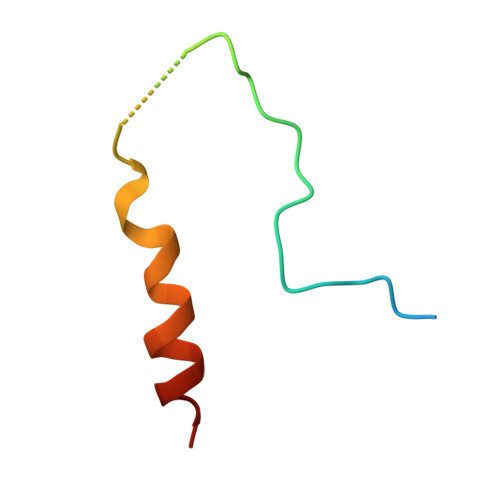Modulation of kinase-inhibitor interactions by auxiliary protein binding: crystallography studies on Aurora A interactions with VX-680 and with TPX2.
Zhao, B., Smallwood, A., Yang, J., Koretke, K., Nurse, K., Calamari, A., Kirkpatrick, R.B., Lai, Z.(2008) Protein Sci 17: 1791-1797
- PubMed: 18662907
- DOI: https://doi.org/10.1110/ps.036590.108
- Primary Citation of Related Structures:
3E5A - PubMed Abstract:
VX-680, also known as MK-0457, is an ATP-competitive small molecule inhibitor of the Aurora kinases that has entered phase II clinical trials for the treatment of cancer. We have solved the cocrystal structure of AurA/TPX2/VX-680 at 2.3 A resolution. In the crystal structure, VX-680 binds to the active conformation of AurA. The glycine-rich loop in AurA adopts a unique bent conformation, forming a pi-pi interaction with the phenyl group of VX-680. In contrast, in the published AurA/VX-680 structure, VX-680 binds to AurA in the inactive conformation, interacting with a hydrophobic pocket only present in the inactive conformation. These data suggest that TPX2, a protein cofactor, can alter the binding mode of VX-680 with AurA. More generally, the presence of physiologically relevant cofactor proteins can alter the kinetics, binding interactions, and inhibition of enzymes, and studies with these multiprotein complexes may be beneficial to the discovery and optimization of enzyme inhibitors as therapeutic agents.
Organizational Affiliation:
Department of Computational and Structural Chemistry, GlaxoSmithKline, 709 Swedeland Road, King of Prussia, PA 19406, USA. baoguang.zhao@gsk.com






















